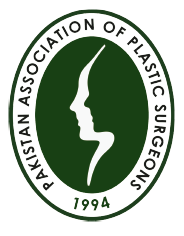
Hand is a delicate structure consisting of bones, joints, tendons, nerve vessels and connective tissue. Injury or inflammation in any of these structures can lead to pain. The most common ones include:
1. Arthritis
2. Nerve compression
3. De Quervain’s tenosynovitis
4. Ganglion cyst
5. Peripheral neuropathy
6. Trigger finger
7. Tendinitis
These vary according to the structure involved and may include:
1. Swelling
2. Restricted movements
3. Numbness
4. Redness
5. Obvious deformity
For any kind of hand pain, seek advice from hand surgeon. The treatment will depend upon the diagnosis and can be conservative or surgical. Conservative management usually revolves around painkillers, resting and elevation.
Minimally invasive procedures like steroid injections. Surgical management is the removal of the causative agent. Most of the patients who need conservative management are treated in outpatient departments while those requiring surgery usually can be treated in day care.
With the help of good hand therapy and proper timely management the pain subsides in few weeks’ time along with good hand function.
Some of the conditions like arthritis might lead to obvious deformities of hand and restriction of movements.
1. Pain
2. Stiffness
3. Restricted movements
4. Infection
5. Need for multiple procedures.
It is inflammation of the tendon sheath of the thumb and is the most common type of tenosynovitis.
1. Pain around the thumb area of wrist
2. Swelling
3. Difficulty in gripping
4. Numbness around thumb base
5. Popping out sensation
Repetitive movements
It can be managed conservatively by giving rest, painkillers and elevation, or by minimal invasive technique like steroid injection. In severe cases refractive to such treatments, surgery is needed to release the compartment. The procedure can be performed within an hour or less.
It usually responds well to treatment. If not treated, it might cause permanent restriction of the movements.
Conservative treatment is usually done in Outpatient department. The surgery can be performed as a day care procedure.
It is a benign nodule usually found in the nail bed and arises from the arterial portion of the glomus body.
1. Excruciating pain
2. Cold intolerance
3. Bluish discoloration
The known treatment option to get rid of this painful condition is to get it removed by surgical excision. It is done as a day care procedure and patient can go home the same day.
The outcomes are good with a very low recurrence rate.
1. Altered nail bed contour
2. Recurrence
Outcome depends on the location and size of the fistula and status of surrounding tissues. Although most of the fistula closes after the surgery, some may recur and requires further surgery.
It usually takes less time than the original hypospadias repair and completes in less than an hour.
The surgery is performed under general anaesthesia and as a day care procedure. Patient can go home the same day after recovery from anaesthesia.
The most common complication is recurrence of the defect. Others complications include infection, difficulty in urination and stricture formation


